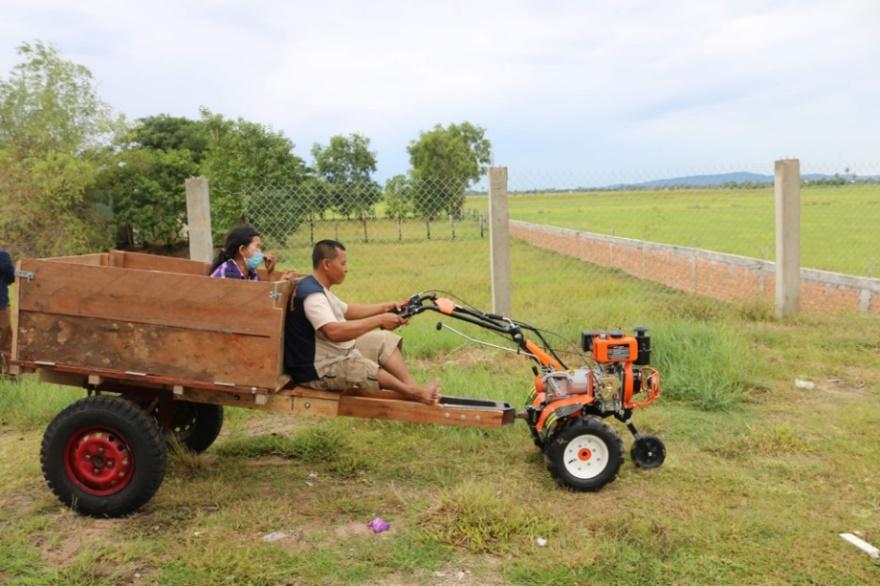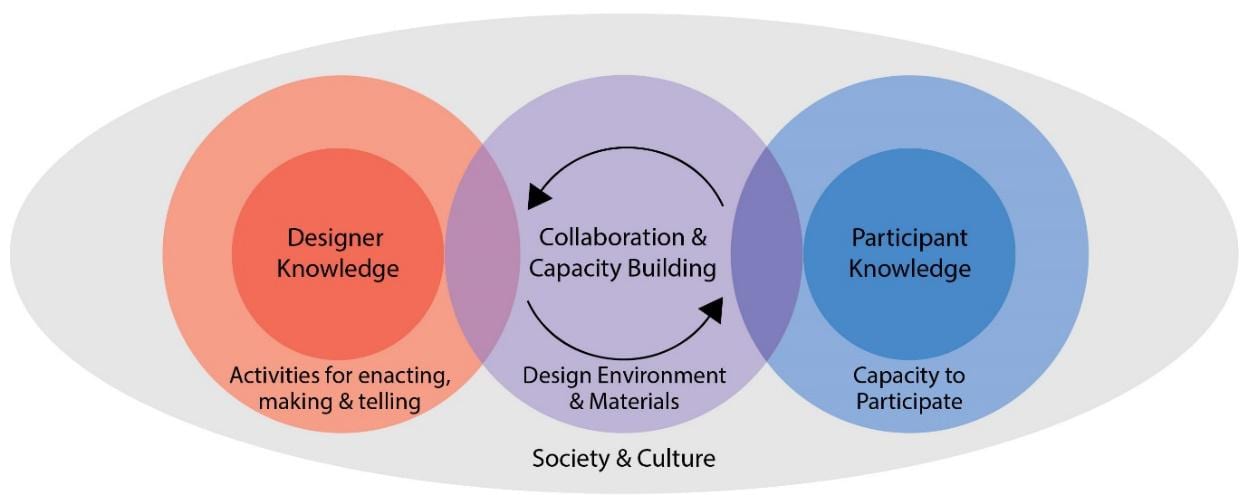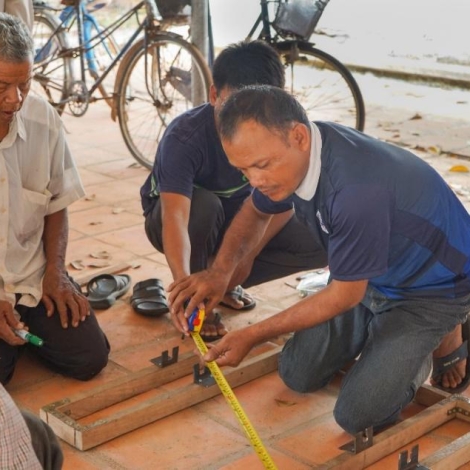
Example of a solution developed during our PD project work, a cassava harvesting cart for people with mobility impairment. This reduces the amount of walking, bending and carrying of heavy loads during cassava harvesting.
If you’ve seen an unused latrine in a village that practices open defecation, or a new cookstove on a shelf beside a cooking fire, you may have seen the result of design projects that did not include customer research. Even the world’s best designers are hamstrung by their lack of cultural and regional knowledge once removed from their hometown and cultural context. Participatory design (PD) addresses that ignorance by bringing the future users of a product into the design process at an early stage.
Even PD can improve, however. As PD practitioners strive to implement more effective, ethical projects, they must focus on designer-participant collaboration and the factors that influence it. Through our research, a new model of PD is emerging. In this article, we present the Collaboration System Model as a tool for planning and evaluating PD projects. We developed the model through systematic literature review and the completion of six first-hand case studies. We undertook those studies with people with disability in rural Cambodia. To learn more about these projects, please see Participatory Design in Rural Cambodia at Research Gate.
The Collaboration System Model presents all of the factors that can affect collaboration between a technical designer and a participant from an engaged community. By focusing on each of these factors during project planning and evaluation, we believe PD projects can be better tailored to the needs of communities and generate more meaningful impact. In the next section, we will explain what each of these factors are, and how best to optimize them to ensure meaningful collaboration.

Participatory Design Collaboration System Model
Society and Culture
Societal and cultural consideration is crucial during project planning, the development of activities, collaboration and evaluation. Its effect will differ based on the specific community, project plan and the socio-cultural values of the context. Cultural power structures, or more specifically a lack of consideration for them, are highlighted time and time again as a barrier for collaboration with marginalized communities.
Design Environment
The term ‘design environment’ refers to the location where the participant and designer collaborate. Thinking about location in this way allows you to view the influence of the wider society on planned activities such as meetings, workshops, construction, etc. It also acknowledges those activities as a factor that influences the collaborative process. Logistical considerations such as the location of meetings, the time of meetings, length of interactions, size of groups, and involvement of local facilitation staff are all important to consider when planning for an effective design environment.
Designer and Participant Knowledge
There are three components of knowledge required for effective design.
- Process knowledge: how to follow a design process and use the required tools and techniques;
- Design knowledge: technically specific skills; and
- Contextual knowledge, information about the local physical and socio-cultural environment and community
It is beneficial for the designer to possess all three types of knowledge. However, when this is not possible, collaborating with participants will help ensure contextual knowledge and local design knowledge are contributed to the project.
Participant Capacity to Participate
Capacity to participate represents the skills and attitudes required for a participant to collaborate and communicate their knowledge in an effective way. We define a capacity to participate using six criteria.
- An ability to express contextual insights
- An ability to express design critique
- An ability to generate insightful ideas
- An ability to create insightful prototypes
- An understanding of the design process
- A motivation to contribute
It is important to understand to what level the community will be able to collaborate and develop appropriate activities and capacity development to ensure meaningful collaboration. For example, see MIT’s use of creative capacity building workshops.
Designer Activities
There are three styles of activity used in PD collaboration.
- Making-style: model making, collages, etc.;
- Enacting-style: role playing, testing prototypes, etc.; and
- Telling-style: group discussions, interviews, etc.
Each style requires a different mode of communication. It is important to understand which style will best engage the involved participants.
The model shows that the designer-participant collaborative relationship must be considered with respect to the society and culture in which it occurs.
The designers also inject a secondary level of environmental influence through their selection of a design environment.
The model shows how planned activities, as well as a participant’s capacity to participate, act as important conduits for transferring knowledge from the participant to the final design solution; either directly from participant-design or through the designer. It shows that effective PD collaboration is a product of the activities and materials that a designer uses, the participant’s capacity to participate and the environments in which the collaboration takes place. The next section will provide recommendations to ensure meaningful designer-participant collaboration in future projects.
Recommendations for Practitioners
While developing the Collaboration System Model we noted a number of recommendations.
- The societal and cultural dynamics of the participants’ community need to be understood before you plan your PD activities.
- It is necessary to understand the participants’ initial capacity to participate and, if required, implement capacity development.
- The society and design environment need to be planned for
- Telling-style activities are not enough, ensure a wide range of activity styles to maximize the participation of all community members.
By using the tools and recommendations presented here, we expect that engineers and designers of global development technology can use the Collaboration System Model to improve their understanding of designer-participant collaboration during a PD project.
About the Authors
Andrew Drain is a Contributing Editor at Engineering for Change and Solution Development Lead at Engineers Without Borders Australia.
Liz Sanders joined the Design Department at The Ohio State University as an Associate Professor in 2011 after having worked as a design research consultant in industry since 1981. Liz serves as an Associate Editor for Codesign: International Journal of Cocreation in Design and the Arts, and is also the founder of MakeTools, a company that explores new spaces in the emerging design landscapes.

